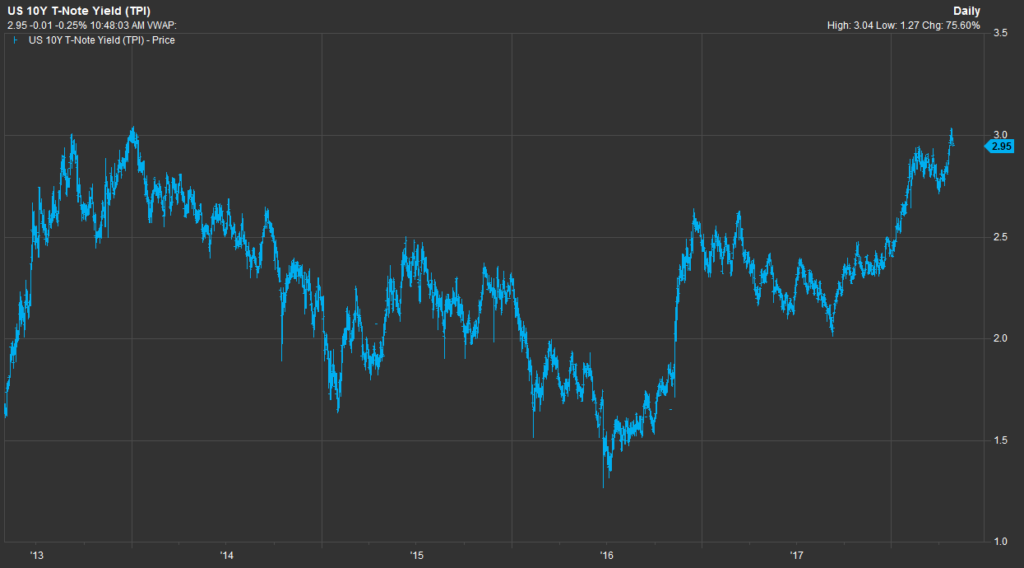The Weekly View (4/30/18)
What’s On Our Minds:
The yield on the U.S. 10-year Treasury hit 3% last week: the highest level it has reached since 2014. Low interest rates have been a key ingredient for our current bull market’s run so recent increases have garnered plenty of attention from investors. The recent move higher puts upward pressure on borrowing costs and has driven investor attention back to the Federal Reserve’s plan to hike interest rates. Below, we break down the various levers that make this number so significant.
Interest rates are, to put it mildly, a complex beast. There are a few mechanisms by which rates affect the economy and the stock market, not all of which are obvious, but which have large effects.
The first is the most obvious: a lower interest rate means it’s cheaper to borrow. Consumers borrow more money to buy houses or cars, businesses borrow money to expand production. And thus, we get economic growth. Everybody’s happy. Except, maybe, the people who get less money in interest for loaning out their hard-earned cash.
An interest rates increase, like the one that seems imminent, is a signal that rates are moving higher, might cause both consumers and Chief Financial Officers to cut back on spending. So, businesses earn less, and earnings fall.
Another very important but more abstract concept is the valuing of stocks via a discount rate. If I think a company is going to earn $10 million in ten years, the interest rate would have to be 0 for an investor to want to buy its stock now for with a $10 million valuation. But if interest rates are higher, investors would be better off just putting the money in the bank for ten years and earning some interest in those ten years. In this way, investors compare interest rates with their expectations for the earnings of companies. If interest rates are low, companies’ stocks are more attractive, and therefore worth more in today’s dollars.
The Federal Reserve must think about all of this, with the added complexity of inflation. The inflation target is 2-3%: at this level, prices are stable, but there is incentive to spend, rather than save, money, and to push the economy along. With inflation at zero, you know that the car you want to buy will cost about the same in year, so you might just think about it for a while, dampening economic activity.
Deflation, when inflation falls below zero, is a major problem: here, you might wait to buy that car, since it will be cheaper next year. And the year after that. This gives rise to the “pushing on a string” phenomenon that was one of our investment committee’s favorite metaphors. You can’t entice people to spend money by cutting rates indefinitely, since rates below zero (usually) are avoided by simply keeping the cash.
Last Week’s Highlights:
The S&P 500 was little changed last week and the Dow Jones was down just over half a percent. Crosscurrents continue to weigh on investor sentiment. We have seen strong first quarter earnings reports and improving economic growth but investors are skeptical because of rising interest rates. 10-year interest rates rose above 3% last week for the first time since 2014. On one hand, low interest rates have been a major factor for this bull market so recent increases have caused anxiety on Wall Street. On the other hand, corporate profits are still expanding and businesses are still realizing the benefits of last year’s tax reform.
Looking Ahead:
The flow of first quarter earnings reports continues this week. Analyst will be busy dissecting reports from 147 of the S&P 500’s components. So far, nearly 80% of the S&P’s companies that have reported have beaten consensus earnings forecast. The Federal Open Markets Committee will announce their interest rate decision on Wednesday. No rate increase is expected.





